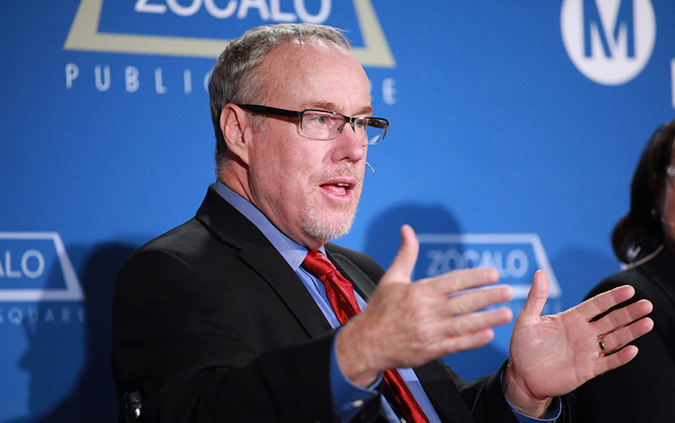It is a truth universally acknowledged that a citizen of Los Angeles in possession of an automobile must be in want of traffic relief. On Sept. 29, Lewis Center Director Brian Taylor challenged this and other conventional wisdom about traffic congestion on a panel at the Zocalo Public Square event entitled: “What Could Speed Up Traffic?”
Taylor has explored the issue of traffic congestion in depth in the past, most notably in an ACCESS magazine article that outlined 10 propositions that challenge traditional notions of congestion. For the Zocalo event, Taylor sat on the panel at the Peterson Automotive Museum with Metro’s Art Leahy and FAST’s Hillary Norton and brought new perspective to several questions posed by both moderator Kajon Cermak and audience members. (Full video and podcast at the Zocalo website.) Here are three of those questions with Taylor’s responses (paraphrased):
- Why don’t we build a rail line along the 405 freeway? Freeways tend to act as collector roads that draw people away from activity centers in order to facilitate long-distance travel. Any rail line along the 405 would thus be far away from the origins and destinations that begin and end every trip, and thus not necessarily a solution to travel difficulties along the Sepulveda Pass.
- Why are the toll lanes on the 110 freeway empty? This is a clear example of how non-intuitive our experience of traffic can be, because lanes packed with cars do not necessarily process more cars than “empty lanes.” Someone sitting in traffic might think the vast majority of cars are in the regular lanes while the toll lanes sit empty, yet a study of Orange County’s 91 freeway found that the four packed lanes carried only 56% of total throughput, while the two “empty” lanes actually carried 42% of all cars.
- If Los Angeles is adding so many new trains, buses, and bike lanes, why is traffic not improving in LA? There are generally three reliable ways to reduce traffic: significantly enlarge road capacity, place restrictions on driving, or implement congestion pricing. None of these options is practical- the first two are particularly bad ideas that would either turn LA into a concrete dystopia or severely diminish productive activity and despite the wisdom of the pricing option, it is politically difficult. But just because traffic congestion will not be solved by increasing the non-auto modes of travel does not mean promoting public transit, biking, and walking is futile. The opposite is true: since congestion is our preferred solution to the problem of excess demand, it is vital that we continue to provide people with alternatives.
Further provocative thinking on the topic of traffic congestion can be found in Lewis Center faculty fellow Martin Wachs’ radio interview on Press Play earlier this year and an op-ed on HOT lanes that Taylor and Wachs penned for the LA Register.
